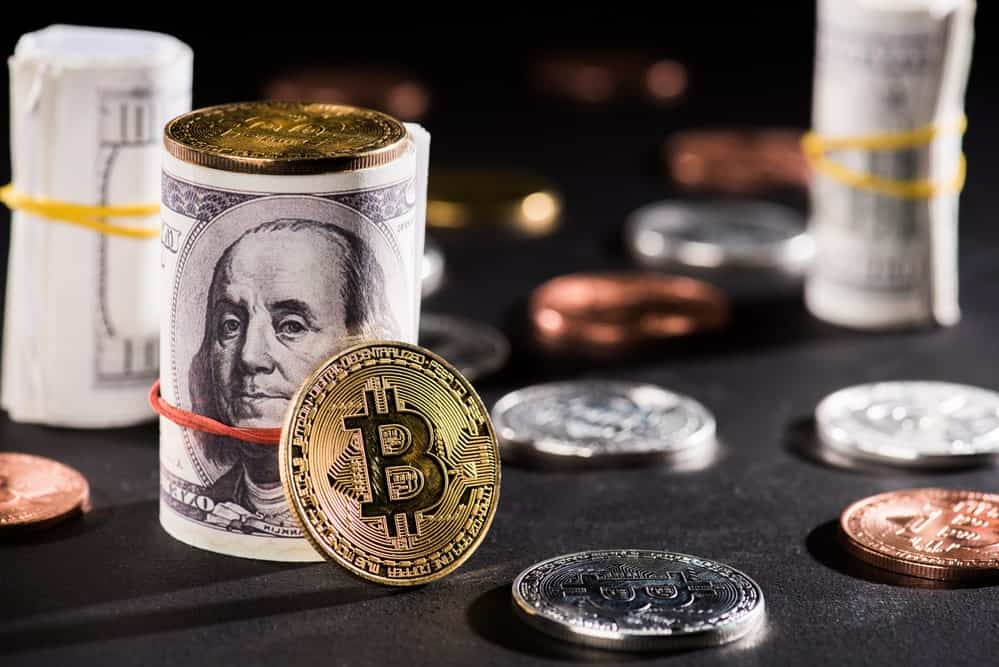
Cryptocurrencies and illegal activities are often mentioned in the same sentence, especially by those who don’t support the idea of digital assets. Their anonymous nature leaves room for attacks that they are mostly used for similar transactions, but some reports might bring more light to the case.
With this said, let’s find out whether or not Bitcoin is used for illicit activities more or cash remains king.
What Is Used For Illegal Activities?
Lawbreakers and offenders have existed long before cryptocurrencies. Fast-forward to more modern times; some people claim than criminals have become much more sophisticated when breaking the law, by using cryptocurrencies. However, by looking at hard data, we might conclude something slightly different.
A CNN report from eleven years ago, notes that 90% of U.S. bills carry actual traces of cocaine. Even if not all of them were used in illegal transactions involving the famous narcotic, they have been contaminated by being stashed next to each other.
Similar cases are part of the reason why lots of people have been urging for an electronic payment method, hence the appearance of credit and debit cards. Additionally, this is also why and how the need for a digital form of payment occurred – enter Bitcoin.
It’s also worth pointing out that CNN’s report was from a long time ago. Despite that, another more recent one coming from Europol shows that cash is still the king when it comes down to illicit activities. Released in 2015, it took cryptocurrencies under consideration, but the conclusion was unmistakeable – the most used payment form for money laundering was still cash.
Cryptocurrencies’ Involvement With Illicit Activities
While cash might still be quite popular among criminals, Bitcoin and the alternative coins don’t have a shortage of history and alleged usage, as well.
Arguably the most significant redpoint comes from the infamous Silk Road marketplace. It served as a black market and is usually considered as the first-ever modern darknet market for selling illegal goods and services. Tor hidden service provided most of the anonymity by allowing users to browse or purchase without being monitored. Furthermore, Bitcoin was the most used (and sometimes the only) form of payment, making its role quite considerable.
“The anonymity properties were achieved by combining the network anonymity properties of Tor hidden services – which make the IP addresses of both the client and the server unknown to each other and to outside observers – with the use of the pseudonymous, decentralized Bitcoin electronic payment system.” – as quoted from this paper.
With Silk Road’s demise, Bitcoin’s usage for illegal activities dropped notably. However, it’s still not perfect, which it would probably never be, as nothing really is. A more recent report from two years ago, just after the parabolic price increase attracting mass media attention, shows rather different but not very optimistic numbers.
At the time when it was posted, the authors estimated that “$76 billion of illegal activity per year involves Bitcoin (46% of Bitcoin transactions), which is close to the scale of the U.S. and European markets for illegal drugs.” It also concludes that when mainstream interest and adoption rises towards the largest cryptocurrency (or any other), the illegal share declines. This is somewhat logical, as when more people get involved, percentage-wise it leaves less for illicit activities.
Or Is Bitcoin Involved So Much With Illegal Activities?
Reports generally provide hard data and numbers that attract trust from readers. Yet, sometimes different papers provide different information, depending on the point of view taken under consideration. While the previous one indicates that almost half of all Bitcoin transactions have illicit nature, CryptoPotato recently showed two other reports with very different findings.
The first one accounts for the third-largest cryptocurrency by market capitalization – Ripple. It notes that $400 million of all processed transactions using XRP have been linked to illegal activities. This represents only 0.2% of its entire volume.
Moreover, the second one focuses mainly on Bitcoin, and it provides a much smaller number than the 46% from above. It concludes that 0.5% of all transactions involving the largest cryptocurrency are purportedly linked with such illicit activities.
Conclusion
Illegal activities have been around for thousands of years and probably (and unfortunately) will never seize to exist.
Bitcoin, as well as some altcoins, is a payment method, even if some skeptic regulators might still don’t acknowledge it. As such, it may be used for regular activities like buying coffee or plane tickets, but also for illegal ones as well. In fact, if this sounds familiar to you, it’s probably because the most recognized form of payment, cash, does (or can do) the same things but in larger proportions since it (still) has much broader usage capacity.
Does that mean that cash is terrible, and we should judge it or ignore it – definitely not. It means that it’s a form of payment with its ups and downs, but most importantly, it means that it’s a tool. And so is Bitcoin. Why blame the tool for serving its purpose?
You might also like:
The post appeared first on CryptoPotato






